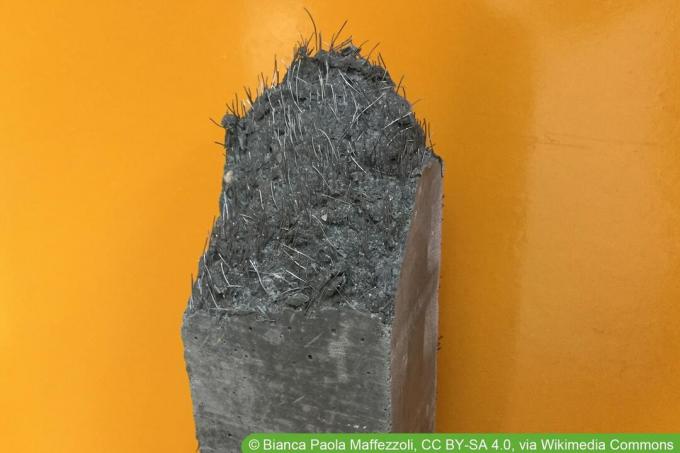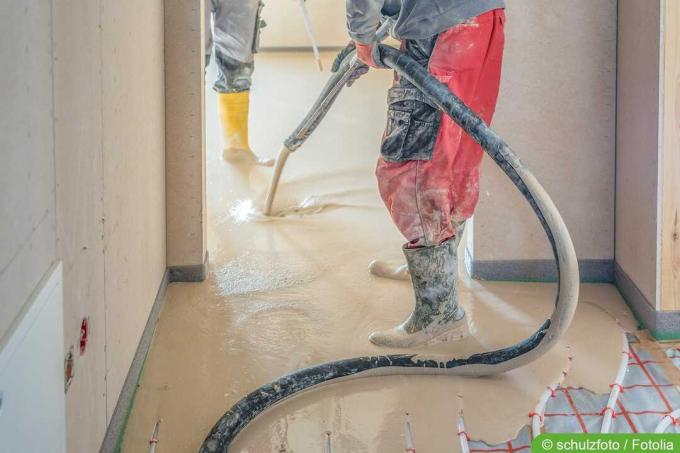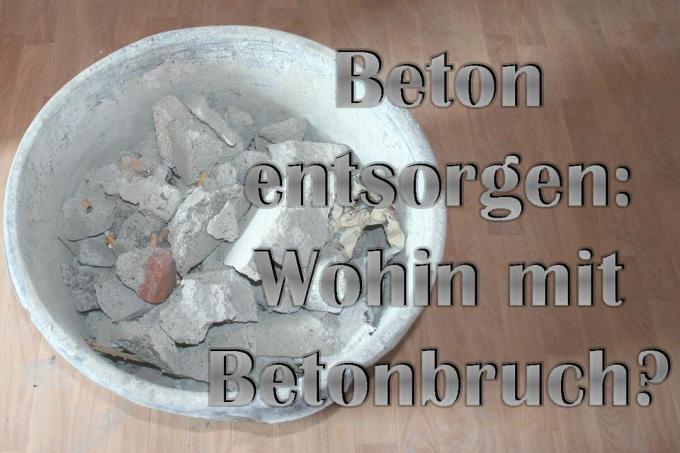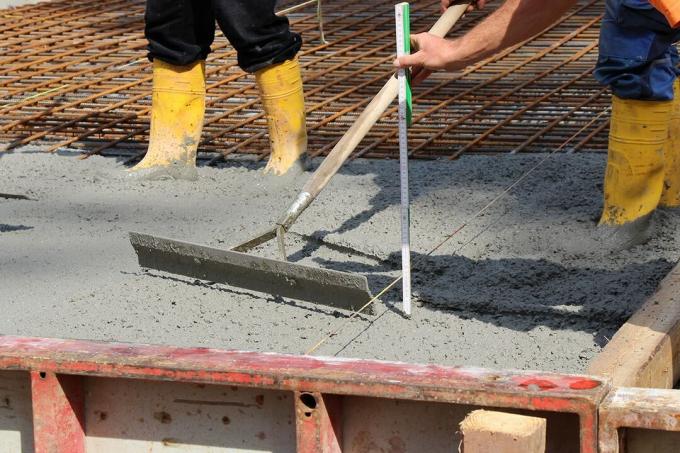

Table of contents
- composition
- Characteristics
- use
- Advantages and disadvantages
- Costs
Fiber concrete is a type of concrete that is mixed with fibers made from different materials. They improve the resilience of classic concrete and provide the mixtures with additional, useful properties.
composition
If you are interested in using fiber concrete, then you need to know about the composition of these mixtures. In itself, fiber concrete is a classic concrete that is mixed with fibers made of different materials. The composition looks like this:
- cement
- Water
- concrete admixture
- aggregate
- Fibers in different doses
The composition differs only slightly from known types of concrete. The following fibers are the most common Mission:
- glass fiber
- plastic fiber (PP)
- steel fiber
Characteristics
When using fiber concrete, you take advantage of the special properties of the fibers. This means that each type has different characteristics that are used when it is used. Depending on these, there are primary ones
attributes, which each of the types offers, regardless of the fiber mixed in:- high stability
- highly resilient
- low weight (compared to normal concrete)
- durable
- tear resistant
These characteristics alone ensure that fiber concrete is better suited to numerous applications than conventional mixtures. The fiber used offers other characteristics that ensure effectiveness:
- Glass fiber: waterproof
- plastic fiber: improved fire protection properties
- steel fiber: resistant, eliminates the need for additional reinforcement
use
Due to their stability and load-bearing capacity, fiber concrete is ideal for a large number of different applications. Concrete can be used in many ways, especially in architecture:
- foundations
- floor tiles
- basement walls
- prefabricated parts for buildings
- concrete beam
- stairs
- seals
- excavation securing
The reinforcement through the fibers has an effective effect on these areas of application. In addition, due to the specific characteristics of each fiber, there are certain “best practices” that each subtype enables. This includes:
- Glass fiber: Screed floors, thin prefabricated components, art
- PP fiber: optimized fire protection, traffic areas
- steel fiber: Industrial floors, tunnel construction, shotcrete
A notice:
Concrete mixed with carbon fibers is also available. It is primarily used in the aerospace, automotive and sports industries.
Advantages and disadvantages
In addition to the properties and uses, you should definitely know the advantages and disadvantages of fiber concrete. The greatest advantage of fiber concrete can already be seen in the characteristics mentioned: the increased resilience enables the concrete to be used for significantly longer. The addition of fibers means that it is no longer brittle and can withstand higher loads. This benefit even extends to impact and shock resistance. Other advantages of fiber concrete are:
- easy processing
- dries evenly
- improved water resistance
- increased carrying capacity
- reduces the formation of shrinkage cracks
- Steel fibers do not rust

Despite the benefits, there is one downside to fiber reinforced concrete that you should be aware of. They are only suitable for the areas of application mentioned and cannot be combined with one another. That means you can't just use steel fiber reinforced concrete and hope for the same fire protection properties as fiberglass mixes. Other disadvantages depend on the fibers used:
- Glass fibers are not used for reinforcement
- PP fibers do not improve stability
- Steel fibers are not a substitute for steel mats
A notice:
Textile reinforced concrete is a lighter version of glass fiber reinforced concrete, the biggest advantage of which is its significantly lower weight. A disadvantage is the poorer tensile strength, which requires additional reinforcement.
Costs
Determining the costs of fiber concrete is difficult due to the different types. In addition, the mixtures and additives are offered by numerous manufacturers who can adjust their prices at will. For this reason, it is important to compare the products, as the costs vary greatly. The prices for fiber concrete are always given for the cubic meter, which makes it easier to determine the costs based on demand. Flat rates can often only be found for steel fiber concrete. Cubic meter prices can also be found for glass fiber mixtures when it comes to screed mixtures. For all other types, you need to contact the retailer directly and get a quote. An overview of the possible costs of reinforced and glass fiber concrete:
- steel fiber concrete: 120 to 180 euros
- fiberglass concrete (screed): 500 to 700 euros
These are ready mixes. For this reason they are not cheap. Alternatively, you can purchase the additives separately and mix them with the concrete. Glass fiber in particular can be easily obtained in the required quantity in this way.
For a cubic meter fiberglass concrete you have to reckon with the following costs for the fiber optics:
- Cost 100 g: 7 to 10 euros
- Amount required per m³ of concrete: 1,000 to 1,500 g
- Total cost: 70 to 150 euros
Want instead PP fibers use, you have to reckon with the following costs:
- Cost 100 g: 1 to 2 euros
- Amount required per m³ of concrete: 500 to 1,000 g
- Total cost: 5 to 20 euros
 Home editorial office
Home editorial office
Learn more about concrete, screed and cement

Fresh screed: when can it be walked on?
Screed is the basis for many floor coverings. It is durable and easy to care for. However, if the load is applied too quickly after application, it can be damaged, with costly consequences. We show how long the drying time is.

What is trass cement? | The differences to cement
Trass cement describes a special type of cement with corresponding amounts of trass. The additive makes the mortar mixed from it more resistant and is effectively suitable for certain areas of application. In this guide you will find out how the mixture differs from conventional cement mixtures.

What is flow concrete | Properties & Applications
As the name suggests, flowable concrete is a much more fluid mass than conventional concrete. This is made possible by adding a flow agent. You can find out about the properties and areas of application of concrete in this guide.

How much does a cubic meter of concrete cost? | precast concrete prices
The independent production of concrete is done in a few simple steps thanks to ready-mixes from the hardware store. The so-called ready-mixed concrete consists of various components and is available in different variants depending on the intended use. The price per cubic meter depends on several factors.

Disposing of concrete: what to do with broken concrete?
Broken concrete often occurs during conversion or demolition work. It is clear that the chunks do not belong in the normal household waste. However, this raises the question of whether concrete is building rubble, construction waste or even hazardous waste.

Drying time of foundations: how long does concrete dry?
The drying time of foundations is surprisingly long. Unlike with thin layers of concrete, the moisture can only escape from the large masses very slowly. But how long does the concrete dry and when can it be loaded?



